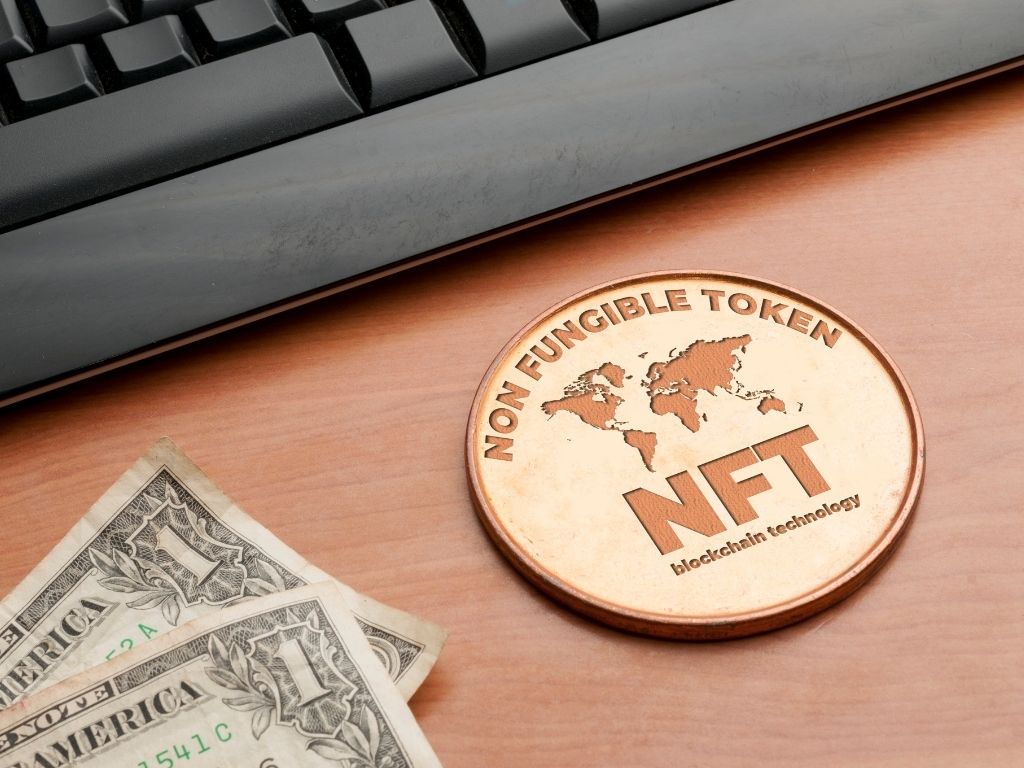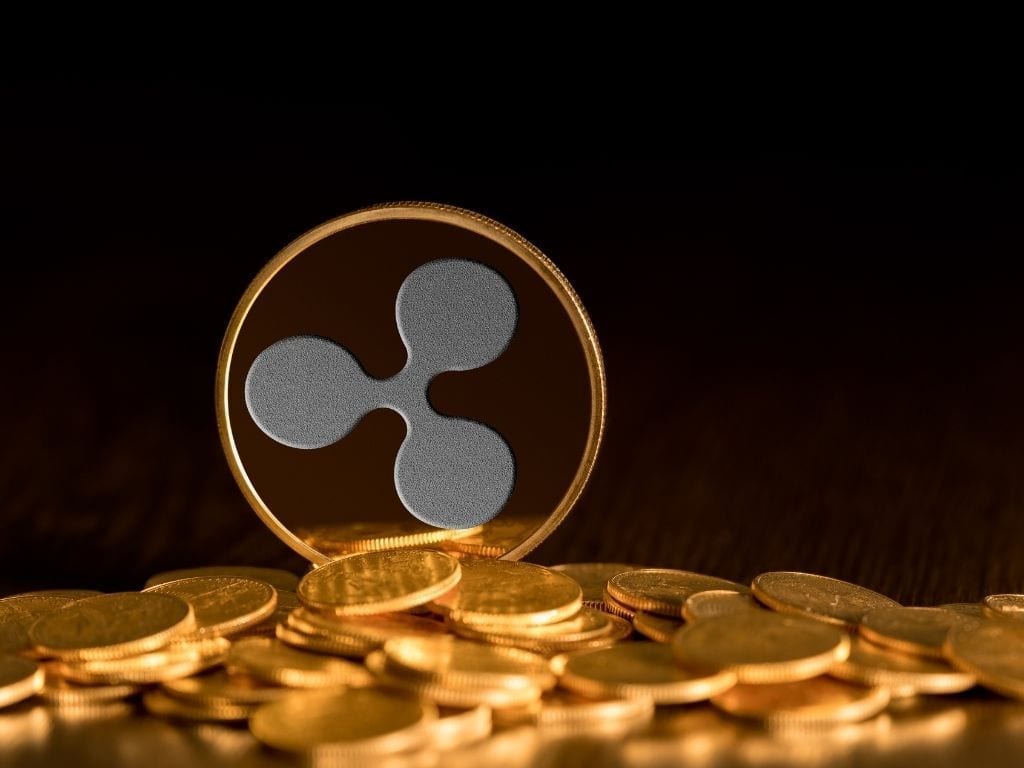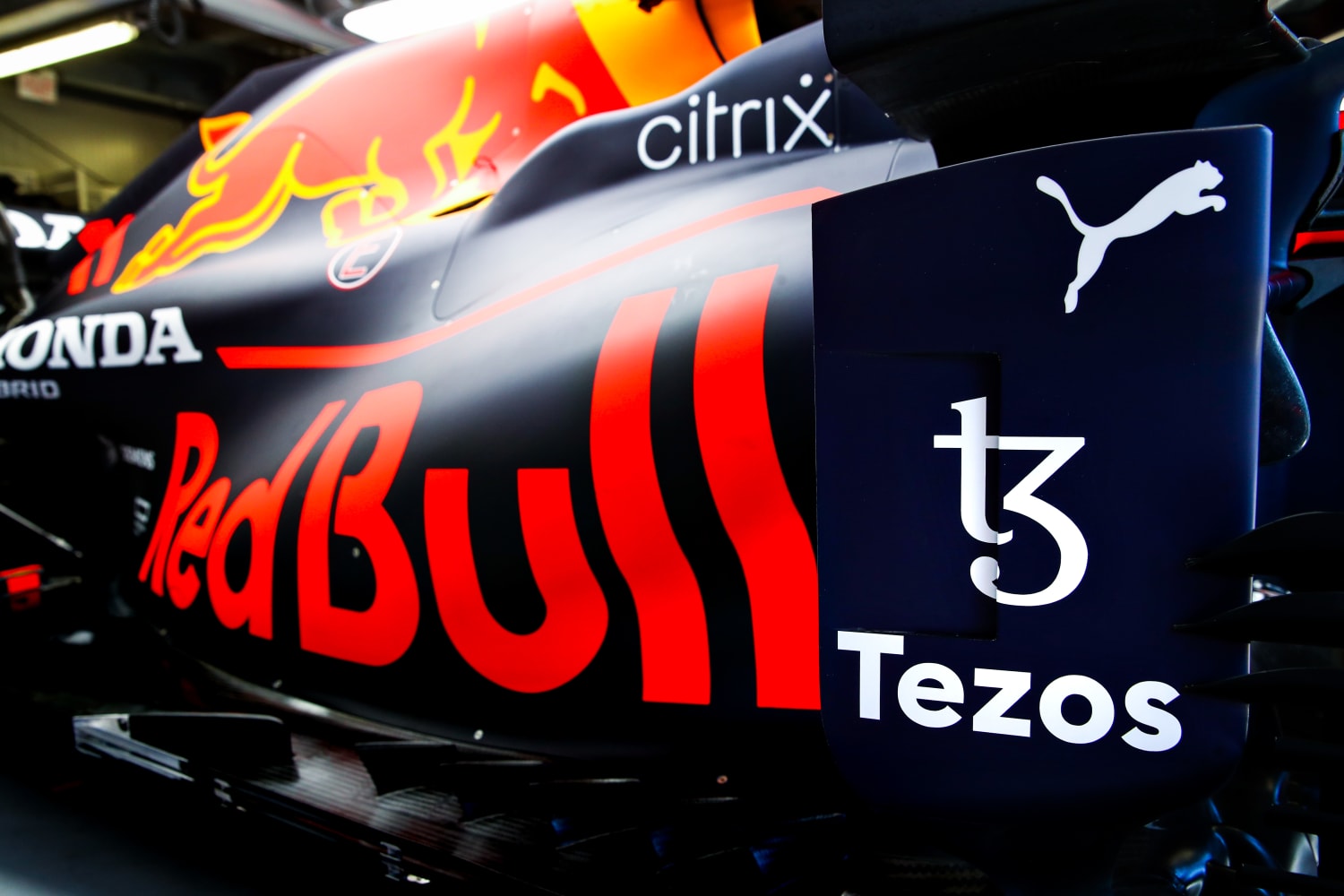Most Impressive NFT Projects That You Should Know
NFTs, or non-fungible tokens, have gained significant attention and popularity in recent years, revolutionizing the world of digital ownership and the way we perceive and trade digital assets. Simply put, NFT projects are unique digital tokens that represent ownership or proof of authenticity for a specific item or piece of content, typically stored on a blockchain.
Unlike cryptocurrencies such as Bitcoin or Ethereum, which are fungible and can be exchanged on a one-to-one basis, NFTs are indivisible and unique. Each NFT has distinct characteristics and cannot be directly exchanged for another NFT on a like-for-like basis. This uniqueness is what makes NFTs suitable for representing digital assets like artwork, music, videos, virtual real estate, collectibles, and more.
NFTs are built on blockchain technology, most commonly utilizing Ethereum’s blockchain through a token standard called ERC-721. The blockchain serves as a decentralized ledger that records and verifies the ownership, transaction history, and authenticity of each NFT. This immutable and transparent nature of blockchain ensures the scarcity and provenance of digital assets, providing a trustworthy environment for buyers and sellers.
One of the significant advantages of NFTs is their ability to establish verifiable ownership and provenance for digital creations. Artists and content creators can mint their work as NFTs, attaching metadata that describes the artwork, its creator, and other relevant details. This metadata is permanently recorded on the blockchain, allowing collectors and enthusiasts to easily validate the authenticity and uniqueness of an NFT. It also enables creators to earn royalties through smart contracts, which automatically distribute a percentage of subsequent sales to the original artist.
NFTs have created a new market for digital collectibles, where scarcity and rarity drive their value. Some NFTs have fetched extraordinary prices in online auctions, attracting attention from investors, collectors, and celebrities alike. The ability to prove ownership, combined with the digital nature of NFTs, has led to new possibilities for monetizing digital creations, providing alternative revenue streams for artists and content creators.
However, it’s worth noting that the NFT market has also faced criticisms and challenges. Some concerns relate to environmental impact due to the significant energy consumption of blockchain networks like Ethereum. Additionally, there have been instances of plagiarism, unauthorized distribution of copyrighted content, and market manipulation within the NFT space.
Nonetheless, NFTs continue to evolve, and their applications extend beyond art and collectibles. They have found utility in gaming, virtual reality, virtual real estate, and even tokenizing real-world assets like real estate properties and luxury goods. The technology behind NFTs has the potential to reshape the way we perceive and trade digital assets, offering new opportunities for creators, collectors, and investors in the digital era.
Also read: Top 10 NFT Projects Of 2023 That You Need To Know About
Importance of NFTs
NFTs have gained significant importance and have had a profound impact on various industries and communities. Here are some key aspects highlighting the importance of NFTs:
1. Authenticity and Provenance: NFTs provide a solution to the long-standing problem of proving ownership and authenticity in the digital realm. By leveraging blockchain technology, NFTs offer a transparent and immutable record of ownership, allowing artists, creators, and collectors to verify the origin and provenance of digital assets. This is crucial in combating issues like plagiarism, counterfeit goods, and unauthorized distribution of copyrighted content.
2. Empowering Artists and Creators: NFTs have opened up new possibilities for artists and creators to monetize their work directly, without relying solely on traditional gatekeepers. Artists can now mint their creations as NFTs and sell them directly to collectors, thereby bypassing intermediaries and retaining a more significant portion of the revenue. Additionally, through smart contracts, artists can earn royalties from secondary sales, ensuring ongoing financial benefits as their works appreciate in value.
3. Digital Ownership and Scarce Digital Assets: NFTs introduce the concept of true ownership in the digital realm. Historically, digital files were easily replicable and lacked scarcity. However, with NFTs, unique digital assets can be created, bought, and sold, giving them inherent value and scarcity. This has created a market for digital collectibles, virtual real estate, in-game items, and more, where scarcity drives value and enables a thriving ecosystem.
4. New Revenue Streams and Economic Opportunities: NFTs have unlocked new revenue streams for individuals and industries. Artists, musicians, and content creators can explore alternative income sources through NFT sales, royalties, and collaborations with brands or platforms. NFT marketplaces provide opportunities for collectors, investors, and enthusiasts to participate in the digital economy and potentially generate profits through trading and investing in NFTs.
5. Preservation of Cultural Heritage: NFTs offer a promising avenue for preserving and promoting cultural heritage in the digital age. Artifacts, historical documents, and cultural assets can be tokenized as NFTs, ensuring their digital preservation and making them accessible to a wider audience. NFTs enable the digitization of cultural heritage, allowing for the preservation of important artifacts and ensuring their long-term visibility and appreciation.
6. Enhanced Gaming and Virtual Experiences: NFTs have revolutionized the gaming industry by introducing ownership and trade of in-game assets. Players can truly own and trade virtual items, characters, and land, creating a vibrant virtual economy. NFTs also enable interoperability between different games and platforms, allowing players to use their digital assets across multiple gaming experiences.
7. Decentralization and Democratization: NFTs embody the principles of decentralization and democratization inherent in blockchain technology. They empower individuals to participate in the digital economy without relying on centralized authorities. NFTs enable artists, collectors, and enthusiasts from around the world to connect directly, removing barriers and fostering a global community centered around digital creativity and ownership.
It’s important to note that while NFTs have brought about significant opportunities and advancements, challenges and concerns also exist. These include environmental impacts, copyright infringement issues, market speculation, and potential bubbles. As the technology and market mature, addressing these challenges will be crucial to sustain the positive impact and ensure the long-term importance of NFTs.
Also read: Here are top DeFi and NFT Projects to Keep a Track in 2022
Top 10 Popular NFT Projects for 2023
The non-fungible token (NFT) market is booming, with new projects launching all the time. It can be difficult to keep up with the latest trends, but here are 10 of the most popular NFT projects to watch in 2023:
- Bored Ape Yacht Club (BAYC)
- BAYC is one of the most well-known NFT projects in the world. It consists of 10,000 unique Bored Ape NFTs, each with its own unique appearance and attributes. BAYC holders have access to a growing community of members, as well as exclusive benefits, such as early access to new projects.
- Azuki
- Azuki is a newer NFT project that has quickly gained popularity. It consists of 10,000 unique anime-inspired NFTs. Azuki holders have access to a similar community and benefits as BAYC holders.
- CryptoPunks
- CryptoPunks is one of the oldest and most respected NFT projects. It consists of 10,000 unique pixel art NFTs. CryptoPunks are highly sought-after by collectors, and some have sold for millions of dollars.
- The Sandbox (SAND)
- The Sandbox is a blockchain-based virtual world where users can create, build, and monetize their own experiences. SAND is the native token of The Sandbox, and it can be used to purchase land, assets, and services in the metaverse.
- Decentraland (MANA)
- Decentraland is another blockchain-based virtual world that allows users to create, build, and monetize their own experiences. MANA is the native token of Decentraland, and it can be used to purchase land, assets, and services in the metaverse.
- Art Blocks
- Art Blocks is a platform for creating and collecting generative art NFTs. Generative art is created using algorithms, and each piece is unique. Art Blocks NFTs have become increasingly popular in recent months, with some selling for hundreds of thousands of dollars.
- Moonbirds
- Moonbirds is a new NFT project that launched in April 2022. It consists of 10,000 unique pixelated owl NFTs. Moonbirds holders have access to a private Discord server, as well as other benefits.
- Doodles
- Doodles is a collection of 10,000 unique NFTs that feature simple, colorful designs. Doodles have become one of the most popular NFT projects in recent months, with some selling for hundreds of thousands of dollars.
- CloneX
- CloneX is a collection of 20,000 3D avatar NFTs created by RTFKT Studios. Each CloneX is unique and features a variety of different attributes. CloneX holders have access to a variety of benefits, including early access to new RTFKT projects.
- Meebits
- Meebits is a collection of 20,000 3D voxel characters created by Larva Labs, the same team that created CryptoPunks. Each Meebit is unique and features a variety of different attributes. Meebits holders have access to a variety of benefits, including early access to new Larva Labs projects.
These are just a few of the many popular NFT projects to watch
Also read: TOP 5 NFT PROJECTS TO TRACK IN 2022
Benefits of using NFTs
Using NFTs (non-fungible tokens) offers several benefits across various domains. Here are the key advantages of utilizing NFTs:
1. Authenticity and Proof of Ownership: NFTs provide a verifiable and immutable record of ownership and authenticity. By leveraging blockchain technology, NFTs offer a transparent and tamper-proof system for verifying the origin and provenance of digital assets. This is crucial for creators, artists, and collectors to establish the authenticity and value of their work, mitigating issues like plagiarism, counterfeiting, and unauthorized duplication.
2. Monetization and New Revenue Streams: NFTs open up new avenues for creators to monetize their digital assets. Artists, musicians, writers, and content creators can directly sell their work as NFTs, bypassing intermediaries and retaining a larger share of the revenue. Additionally, through smart contracts, creators can earn royalties on subsequent sales, ensuring ongoing financial benefits as the value of their work appreciates. NFTs provide creators with a direct and decentralized platform to connect with their audience and monetize their talent.
3. Fractional Ownership and Liquidity: NFTs enable the fractional ownership of assets. Tokenizing an asset as an NFT allows it to be divided into smaller shares, opening up investment opportunities for a wider range of individuals. Fractional ownership of assets like real estate, artwork, or collectibles can democratize access to traditionally expensive or illiquid assets, allowing individuals to participate in markets they might otherwise be excluded from. NFTs facilitate liquidity by enabling the easy buying and selling of fractional shares, thereby enhancing the marketability of previously illiquid assets.
4. Enhanced Digital Collectibles and Virtual Economies: NFTs have transformed the concept of digital collectibles. With NFTs, collectors can acquire and trade unique digital items, such as artwork, trading cards, virtual real estate, and in-game assets. NFTs bring the aspect of scarcity and proven ownership to the digital world, creating thriving marketplaces and vibrant virtual economies. These virtual economies enable users to buy, sell, and trade digital assets, leading to increased engagement, social interactions, and the potential for value appreciation.
5. Transparent and Secure Transactions: NFTs leverage blockchain technology, which provides transparency and security in transactions. Blockchain records all NFT ownership transfers, ensuring an auditable and immutable transaction history. This transparency reduces the risk of fraud and counterfeit assets, as the ownership and transaction details are publicly accessible. The decentralized nature of blockchain eliminates the need for intermediaries, reducing the associated costs and potential for disputes.
6. Preservation and Access to Cultural Heritage: NFTs offer opportunities for the preservation and accessibility of cultural heritage. Historical artifacts, artworks, documents, and other cultural assets can be tokenized as NFTs, ensuring their digitization and long-term preservation. NFTs enable broader access to these assets, allowing individuals from around the world to appreciate and engage with cultural heritage that may have been geographically or financially inaccessible. Furthermore, NFTs can provide a means for artists and creators to revitalize traditional art forms and cultural practices, reaching a global audience.
7. Programmable and Interactive Assets: NFTs can be programmable, allowing creators to embed additional functionality and interactivity within the token itself. Smart contracts associated with NFTs can define specific behaviors, attributes, or unlockable content. This programmability enhances the user experience and offers dynamic engagement possibilities. NFTs can represent dynamic digital entities, changing based on external factors or user interactions, enabling unique and personalized experiences for collectors.
As NFT technology continues to advance and find applications across industries, the benefits of using NFTs are likely to expand, empowering creators, collectors, and investors in the digital age. However, it’s important to address challenges and ensure responsible adoption to fully realize the potential of NFTs.
Future of NFTs
The future of NFTs holds immense potential as the technology continues to evolve and find applications across various industries. Here are some key aspects that may shape the future of NFTs:
1. Expansion of Use Cases: While NFTs have gained significant traction in the art and collectibles space, their potential extends far beyond. We can expect NFTs to be used in areas such as music, film, virtual reality, fashion, sports, real estate, and even personal identity. Musicians can tokenize albums or individual songs, granting unique experiences or access to exclusive content. Movie studios can tokenize film memorabilia or grant ownership rights to specific scenes. Fashion brands can create limited edition digital wearables. The possibilities are virtually limitless, and as more industries recognize the value of NFTs, we can anticipate diverse use cases to emerge.
2. Integration with Virtual Worlds and Metaverses: NFTs are poised to play a crucial role in the development of virtual worlds and metaverses—immersive online environments where users interact with each other and digital assets. NFTs can represent virtual land, buildings, avatars, and other in-game assets, fostering ownership, trading, and economic opportunities within these virtual realms. We may witness increased interoperability between different virtual worlds, allowing users to transfer and utilize their NFTs seamlessly across various platforms.
3. Enhanced Interactivity and Utility: NFTs have the potential to become more interactive and functional. Instead of merely representing static digital assets, NFTs can incorporate smart contract functionalities that enable dynamic behavior or access to additional content. For example, an NFT representing a virtual pet could have programmed characteristics, evolving and interacting with its owner or the environment. NFTs could also grant access to exclusive events, memberships, or personalized experiences, adding utility and value beyond simple ownership.
4. Tokenization of Real-World Assets: NFTs can be used to tokenize real-world assets, such as real estate properties, luxury goods, or intellectual property rights. This opens up opportunities for fractional ownership, increased liquidity, and streamlined trading of traditionally illiquid assets. NFTs could enable individuals to invest in properties or artwork by purchasing fractional shares, creating new avenues for asset ownership and investment.
5. Sustainability and Scalability Improvements: One of the challenges associated with NFTs is the significant energy consumption of blockchain networks. In the future, we can expect advancements in blockchain technology, such as the transition to more energy-efficient consensus algorithms or the adoption of layer 2 scaling solutions, to address these concerns. These improvements would make NFTs more sustainable and enable larger-scale adoption without compromising the environment.
6. Regulatory Frameworks and Standards: As NFTs gain more mainstream adoption, governments and regulatory bodies are likely to establish frameworks to address legal, tax, and intellectual property aspects related to NFTs. Additionally, industry-wide standards for NFTs and interoperability may emerge, facilitating seamless exchange and use of NFTs across different platforms and ecosystems.
7. Cultural and Social Impact: NFTs have the potential to redefine notions of ownership, creator rights, and value in the digital age. They can empower creators from diverse backgrounds, bridge the gap between physical and digital art, and provide opportunities for underrepresented artists to monetize their work. NFTs may reshape the art market, challenging traditional systems and providing a more inclusive and accessible space for artists and collectors.
While the future of NFTs holds great promise, it is important to address and mitigate challenges such as copyright infringement, market speculation, and environmental concerns. With thoughtful regulation, technological advancements, and responsible adoption, NFTs have the potential to revolutionize the way we create, trade, and appreciate digital and real-world assets in the years to come.
best NFT projects to hold for the next 5 years:
BAYC
10KTF
KINGSHIP
VEEFRIENDS
RTFKT
VEVE#10KTF #bayc #bakc #veefriends #kingship— John Savage (@johnsavage_eth) July 7, 2023
Stay informed with daily updates from Blockchain Magazine on Google News. Click here to follow us and mark as favorite: [Blockchain Magazine on Google News].
Get Blockchain Insights In Inbox
Stay ahead of the curve with expert analysis and market updates.
latest from tech
Disclaimer: Any post shared by a third-party agency are sponsored and Blockchain Magazine has no views on any such posts. The views and opinions expressed in this post are those of the clients and do not necessarily reflect the official policy or position of Blockchain Magazine. The information provided in this post is for informational purposes only and should not be considered as financial, investment, or professional advice. Blockchain Magazine does not endorse or promote any specific products, services, or companies mentioned in this posts. Readers are encouraged to conduct their own research and consult with a qualified professional before making any financial decisions.

 Bitcoin
Bitcoin  Ethereum
Ethereum  XRP
XRP  Tether
Tether  Solana
Solana  Dogecoin
Dogecoin  USDC
USDC  Cardano
Cardano  Lido Staked Ether
Lido Staked Ether  TRON
TRON  Avalanche
Avalanche  Sui
Sui  Wrapped stETH
Wrapped stETH  Chainlink
Chainlink  Toncoin
Toncoin  Shiba Inu
Shiba Inu  Stellar
Stellar  Wrapped Bitcoin
Wrapped Bitcoin  Hedera
Hedera  Polkadot
Polkadot  WETH
WETH  Bitcoin Cash
Bitcoin Cash  Uniswap
Uniswap  Pepe
Pepe  Litecoin
Litecoin  LEO Token
LEO Token  Hyperliquid
Hyperliquid  Wrapped eETH
Wrapped eETH  NEAR Protocol
NEAR Protocol  Internet Computer
Internet Computer  Ethena USDe
Ethena USDe  USDS
USDS  Aptos
Aptos  Aave
Aave  Mantle
Mantle  Bittensor
Bittensor  Cronos
Cronos  POL (ex-MATIC)
POL (ex-MATIC)  Virtuals Protocol
Virtuals Protocol  Ethereum Classic
Ethereum Classic  Render
Render  Artificial Superintelligence Alliance
Artificial Superintelligence Alliance  Arbitrum
Arbitrum  MANTRA
MANTRA  Ethena
Ethena  Tokenize Xchange
Tokenize Xchange  WhiteBIT Coin
WhiteBIT Coin 









